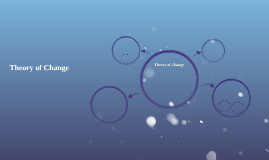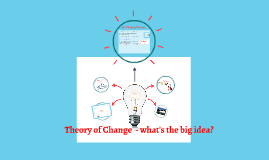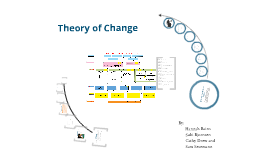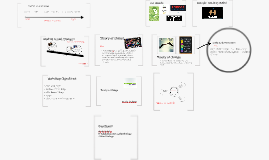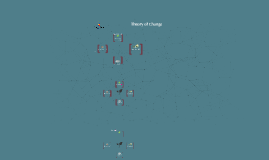Theory of Change
Transcript: Background On Theory Of Change Statistics from 2009 Target group: Prisoners Why? TB and HIV rates in Cambodia’s largest prison are roughly 6 and 4 times the respective national averages, A screening of 1,783 inmates at the Prey Sar prison in Phnom Penh by Médecins Sans Frontières ( MSF) found 4 % had TB, and 3 % were HIV-positive Context - Overcrowding in Cambodia's prisons has aggravated the problem. - The country’s 25 prisons have an official capacity of 8,000 inmates but hold nearly 14,000 people attended to by 96 health workers. Population of Cambodia 14.8 million Planning and context Moving beyond ‘business as usual’ Strengthens clarity Unifying framework Empowering Cambodia Statistics." UNICEF. N.p., n.d. Web. 29 Nov. 2012.http://www.unicef.org/infobycountry/cambodia_statistics.html>. Chaya, Nada. "Cambodia and HIV: Winning Round Two in Preventative Fight.”Population Action International 1.7(2006) Global HIV Prevention Working Group. "Access to HIV Prevention: Closing the Gap."Foreign Affairs 82.4 (2003): 1-42. World Health Organization. "Adult (aged 15-49 Years) HIV Prevalence in Cambodia Provinces, Population-based Survey, 2005." ReliefWeb. N.p., 31 Dec. 2008. Web. 29 Nov. 2012.<http://reliefweb.int/map/cambodia/adult-aged-15-49-years-hiv-prevalence-cambodia-provinces-population-based-survey-2005>. Theory of Change Review, a report commissioned by Comic Relief. (Cathy James, September 2011) Web. 30 Nov. 2012 http://mande.co.uk/blog/wp-content/uploads/2012/03/2012-Comic-Relief-Theory-of-Change-Review-FINAL.pdf Review of the use of ‘Theory of Change’ in international development, a report of DFID by Isabel Vogel (April 2012) Web. 29 Nov. 2012 http://www.dfid.gov.uk/r4d/pdf/outputs/mis_spc/DFID_ToC_Review_VogelV7.pdf Guided Example “Project Superwomen” from Acknowledge and The Aspen Institute Web. 29 Nov. 2012 http://www.theoryofchange.org/pdf/Superwomen_Example.pdf Connell, J and Klem, A. “You can get there from here: Using a Theory of Change Approach to Plan Urban Education Reform (2000) http://www.scribd.com/doc/91526500/Connell-Klem-Theory-of-Change-Ed-Reform “What is ‘TOC’ thinking and what its added value?” E – dialogue October 17 - November 14 2011 Web. 29 2012 http://www.hivos.net/Hivos-Knowledge-Programme/Themes/Theory-of-Change/E-dialogues Using Theory Of Change With Other Tools 1998: 100% Condom Use Program (CUP) 2004: Widespread Condom Distribution 2008: Law on the Suppression of Human Trafficking and Sexual Exploitation 2011: TV and Radio PROJECT ZER% “Despite the dramatic decline in HIV prevalence among high risk groups described above, Cambodia to date still has the highest rate of HIV/AIDS prevalence in Southeast Asia and one of the highest in Asia” (Chaya, 2006) Main mode of HIV transmission today is husband-to-wife and monogamous married women as well as in the informal sex industries “the country is once again challenged to refine and tailor its approach” (Chaya, 2006) Theory of Change Benefits Of Theory Of Change SRH Education in Schools Reflections On Theory Of Change Time Consuming “Logframe by another name” Still not embraced as ‘best practice’ by entirety development community Subjective “It is the product of thinking (and power) relationships of those involved in shaping it” – Guijt and Retolaza, 2012 Another ‘Donor Hoop’ Cambodia Today SRH Education in Prisons Bibliography Weaknesses Of Theory Of Change “Development thinking is becoming more complex: theory of change is helping to deal positively with the complexities” (Vogel, 2012) By: Hannah Bains Subi Bjørnsen Cathy Drew and Sam Sesemann Interventions Target group: Mother & Children Why? HIV prevalence among pregnant women is higher than national average for adults 1.1 per cent in 2006 35 % of infants born to HIV-positive women will become infected with HIV each year With appropriate services and care this can fall to less than 5 % How? Prevention of mother-to-child transmission (PMTCT) initiatives: Combine VCT with antenatal care and education for pregnant women and their families Counselling on: 1. Safe infant feeding practices 2. Family planning. Treatment: Timely referral for ART helps HIV-infected mothers cope with their illness and can prevent MTC transmission Target group: Youth & Adolescents Why? 2010 survey on most at risk young people carried out by the Government with UNICEF support shows: - Sexually Active: More than 41 % of male and 23 % of female participants. - Condom Use: with boyfriends or girlfriends was alarmingly low – 31 % among females and 58 % among males. - Context: Dating and premarital sex among the nation's youth have supplanted the traditional practice of arranged marriage. Lack of education and awareness, regarding the risks of HIV and other sexually transmitted diseases leaves many young couples. Conclusions on Theory Of Change “Vision of Success” (HIVOS, 2011) Assumptions are key Plausible, Dynamic, Do-able, Testable, Meaningful (Connell and Klem, 2000) Progressive and worthwhile tool for







